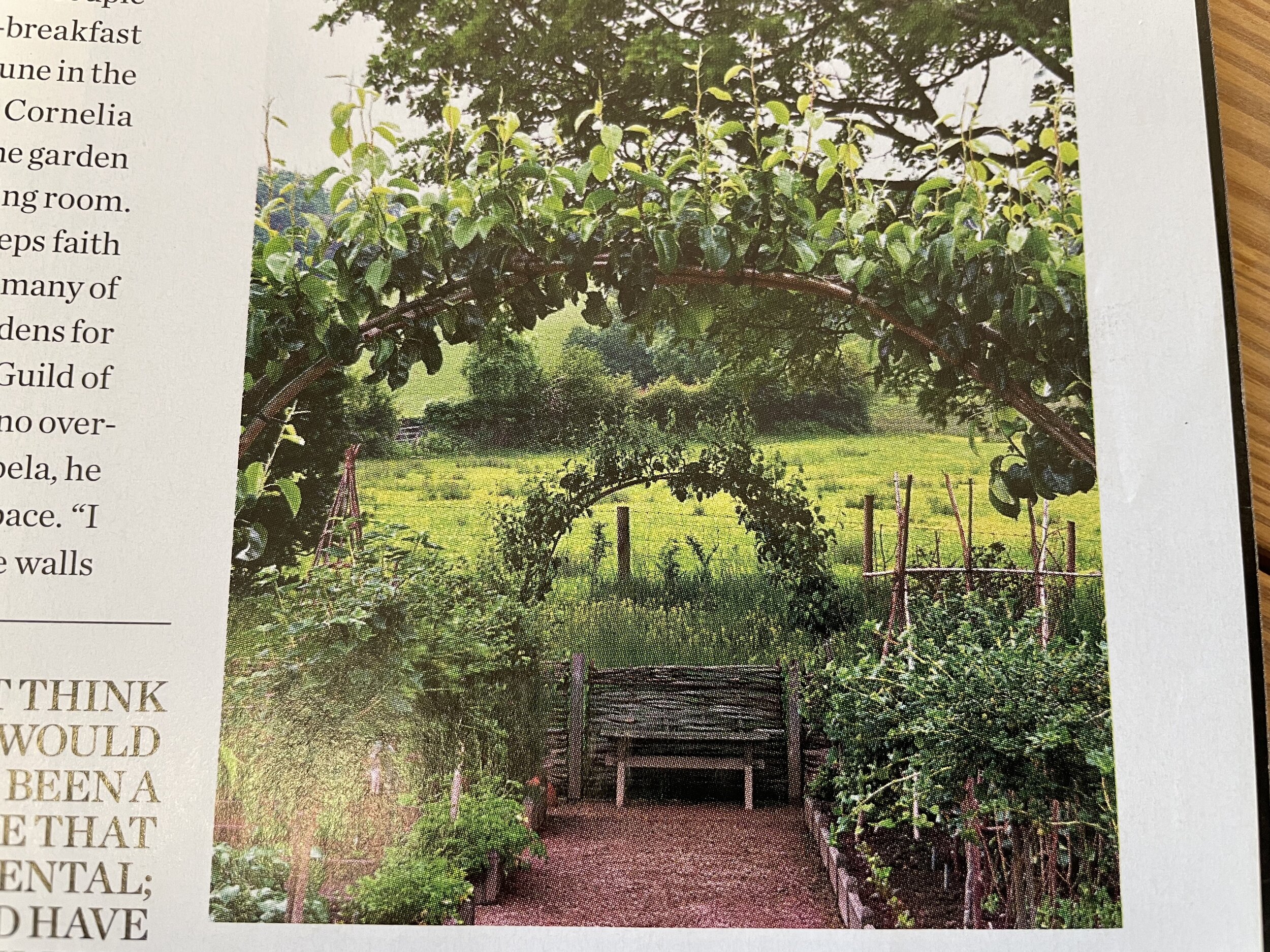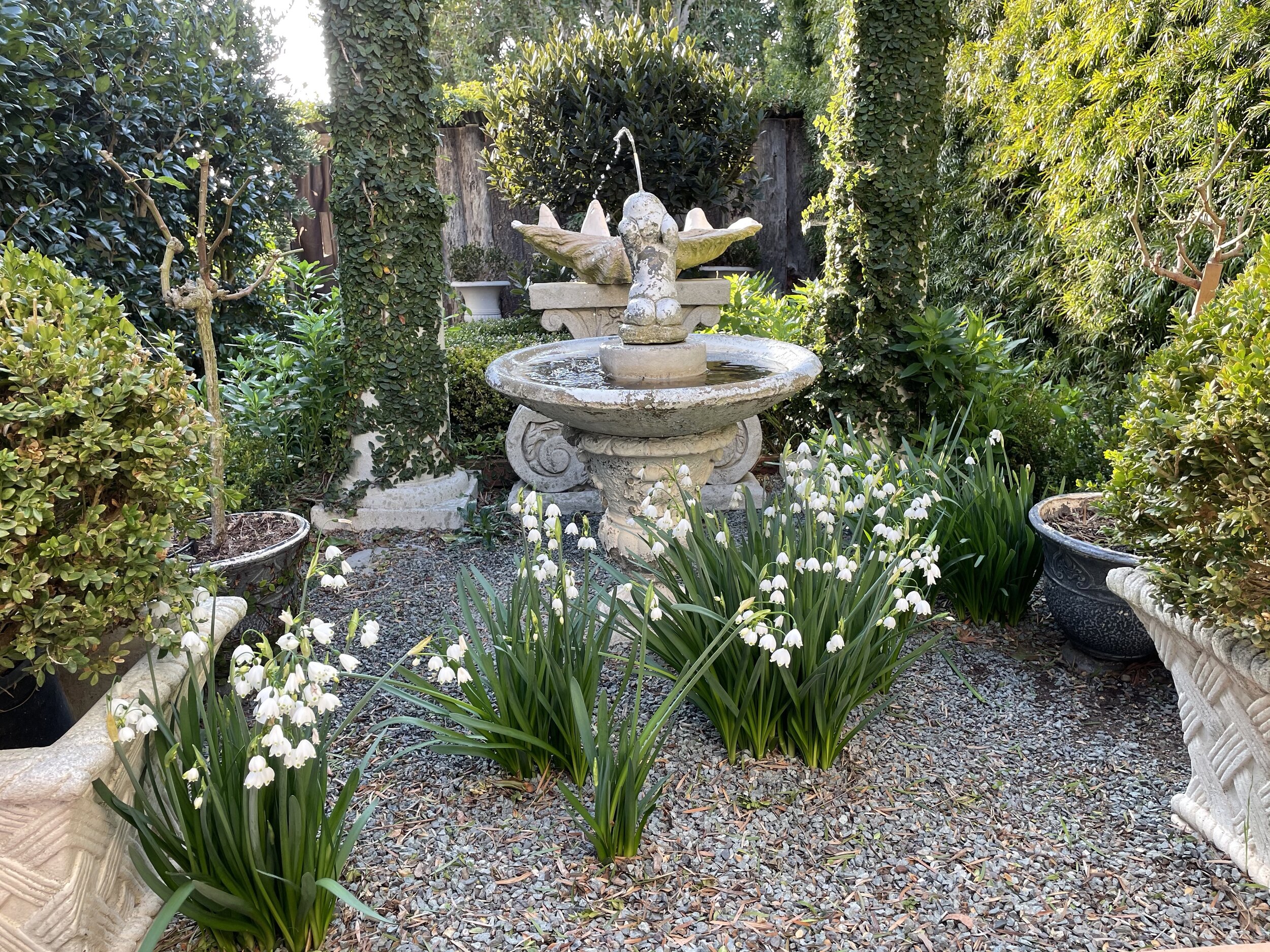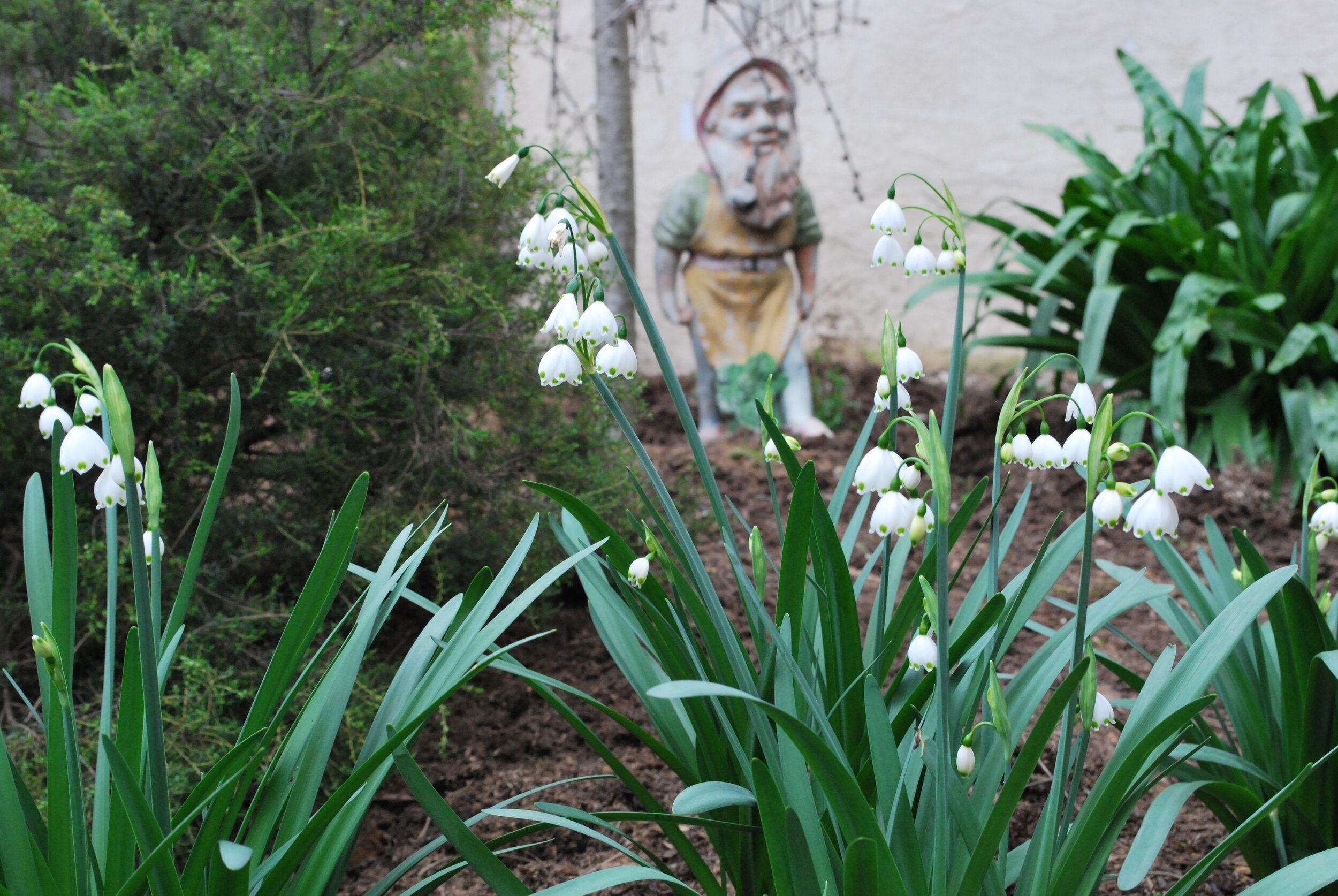The Kitchen Garden at Allt-y-bela in Wales, Garden Design 2012 Magazine
From my post last week, Down The Garden Path, followers were asking me where I got my willow fencing. I thought it might be fun to revisit the original post from June 2021, and my original kitchen garden inspiration from photos and the Garden Design article. I hunted “high’ and “low” to find willow products, and finally found them at Master Garden Products in the Pacific Northwest. I actually called them as I had several questions and needed more information to make my order. Master Garden Products couldn’t have been more helpful and so friendly. I highly recommend the company and their products.
Now is a great time to get your gardens plans in place, make an order, and enjoy the beauty of willow!
Bon Appétit et Bon Weekend…Bonnie
The inspiration for my kitchen garden, or potager, came from a Garden Design, Winter 2012 magazine article, Simplicity Rules, on well-known garden designer, Arne Maynard’s rustic and historic late medieval farm, Allt-y-bella. Located in Wales, much of the rustic gardens and garden structure remind me of Provence. I envisioned borrowing a lot of the main elements featured in the article and photos, creating the look of a rustic kitchen garden. Some of these elements that caught my interest were the wattle hazel fencing, arching fruit trees with a centered bench, raised beds for vegetables, obelisks for climbing vegetables, easy pathways around the raised beds, and select spots for larger perennial plants like rhubarb and artichokes.
Allt-y-bela Kitchen Garden Pathway, Arching Fruit Trees, and Bench, Garden Design 2012
In 2015, I started creating a kitchen garden space to the north of our vineyard, with 4’ x 8’ raised bed kits. I looked high and low for hazel or willow wattle fencing for enclosing the kitchen garden similar to Allt-y-bella. I couldn’t find any source at the time. I needed about 75’ total. However, I happened to find a large amount of rolled willow fencing at Rogers Gardens at 50% off in an obscure sale corner. My intention for fencing the perimeter was to keep our chickens out of the kitchen garden as well as any random critters.
Up until 2020, my kitchen garden was good, and a work in progress. Over time, with sun exposure and high winter winds the willow fencing began to come apart and break down. This is common. I started looking for what I call wattle or willow fencing again.
My Kitchen Garden, June 2020
Last month I found willow fence panels online at Master Garden Products. They offer a nice selection and sizes of willow fencing, panels, borders, obelisks, etc. They are out of the Seattle area, and will freight orders to you. I purchased 6’ L x 3’ H woven panels for my entire perimeter, and used the same anchoring rebar and metal stakes that were already in place. I am really pleased with the look, and the material overall. I also purchased three obelisks for climbing beans. The willow panels are stronger and sturdier than the rolled fencing, but will eventually break down over time.
My Kitchen Garden, May 2021
Fine tuning the willow fence, I will put put larger rocks around the bottom of the fencing, to discourage critters from burrowing under the fence.
Starting an Outside Row of Perennial Artichokes
For more information and musing on how I create garden rooms from garden magazines, photos, and design ideas, please go to my previous post, The Making of a Garden Room.
French Fabulous! On Netflix, there is a new French subtitled drama series, Lupin. It is like a modern day “Houdini” Thriller series. Lots of twists and turns. Not only does it keep you on the edge, it is filmed mainly in beautiful Paris. Once you watch an episode or two, it draws you like a magnet. With two series completed, I see there is a third one coming.
Bon Appétit and Bon Weekend….Bonnie











